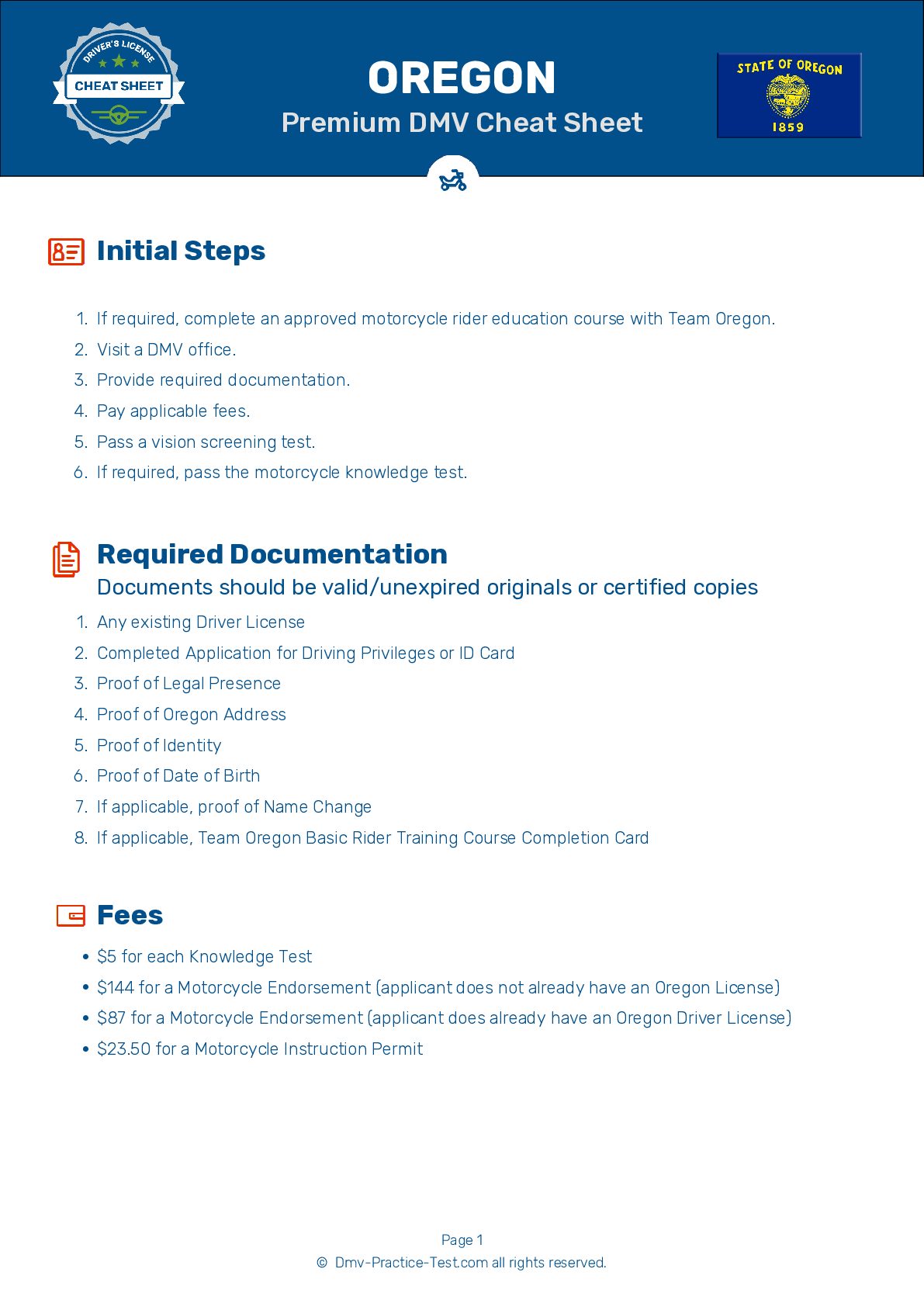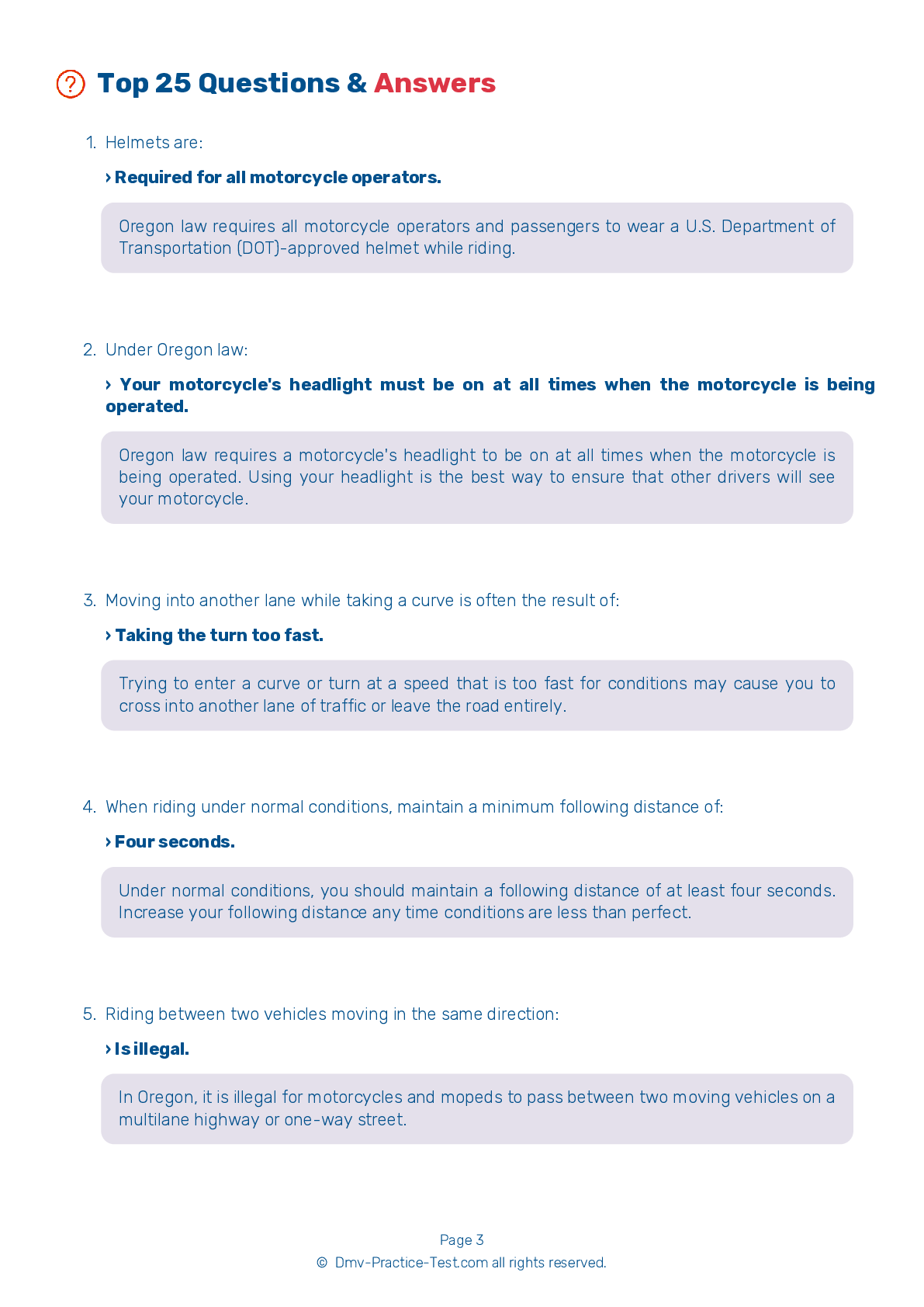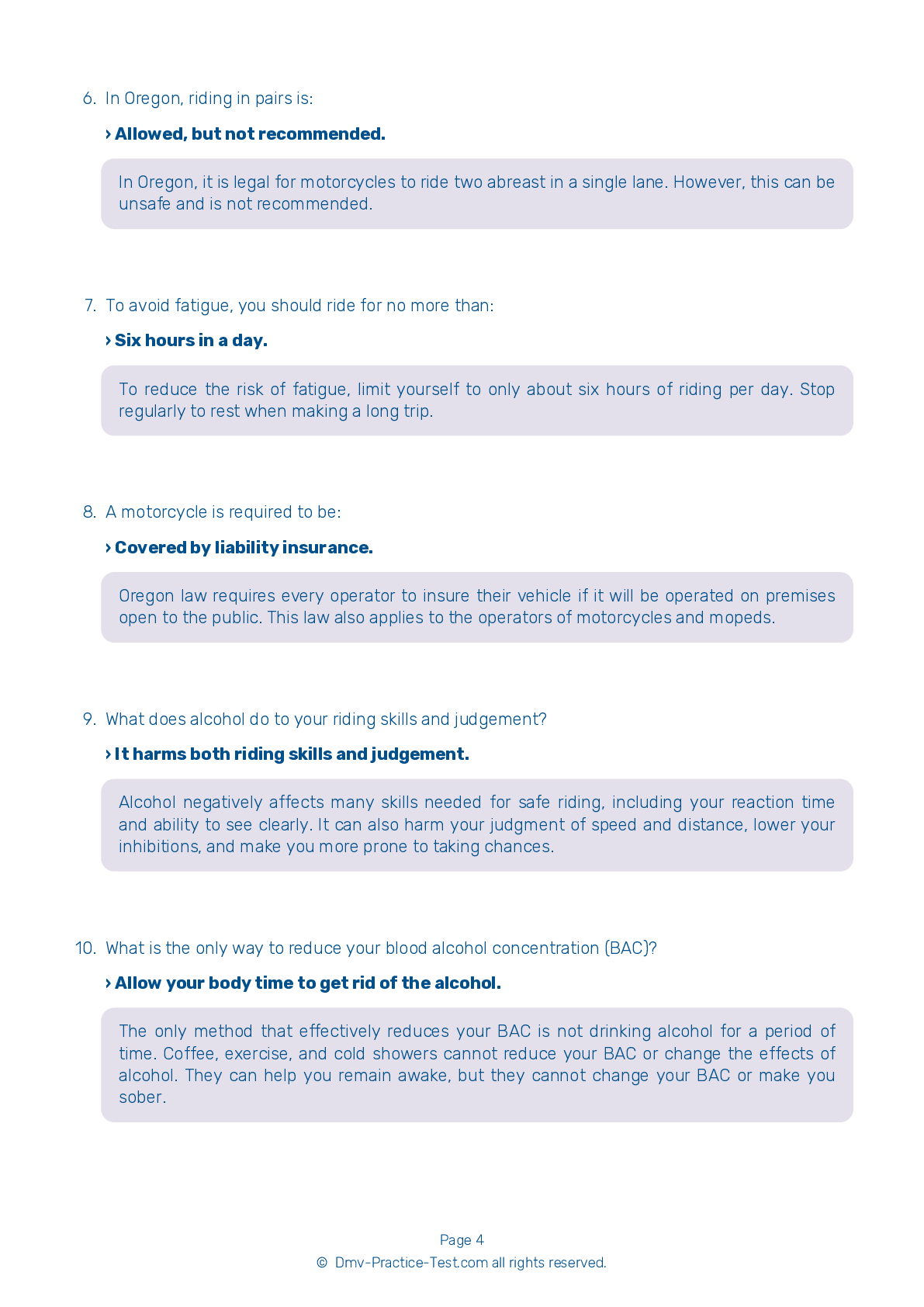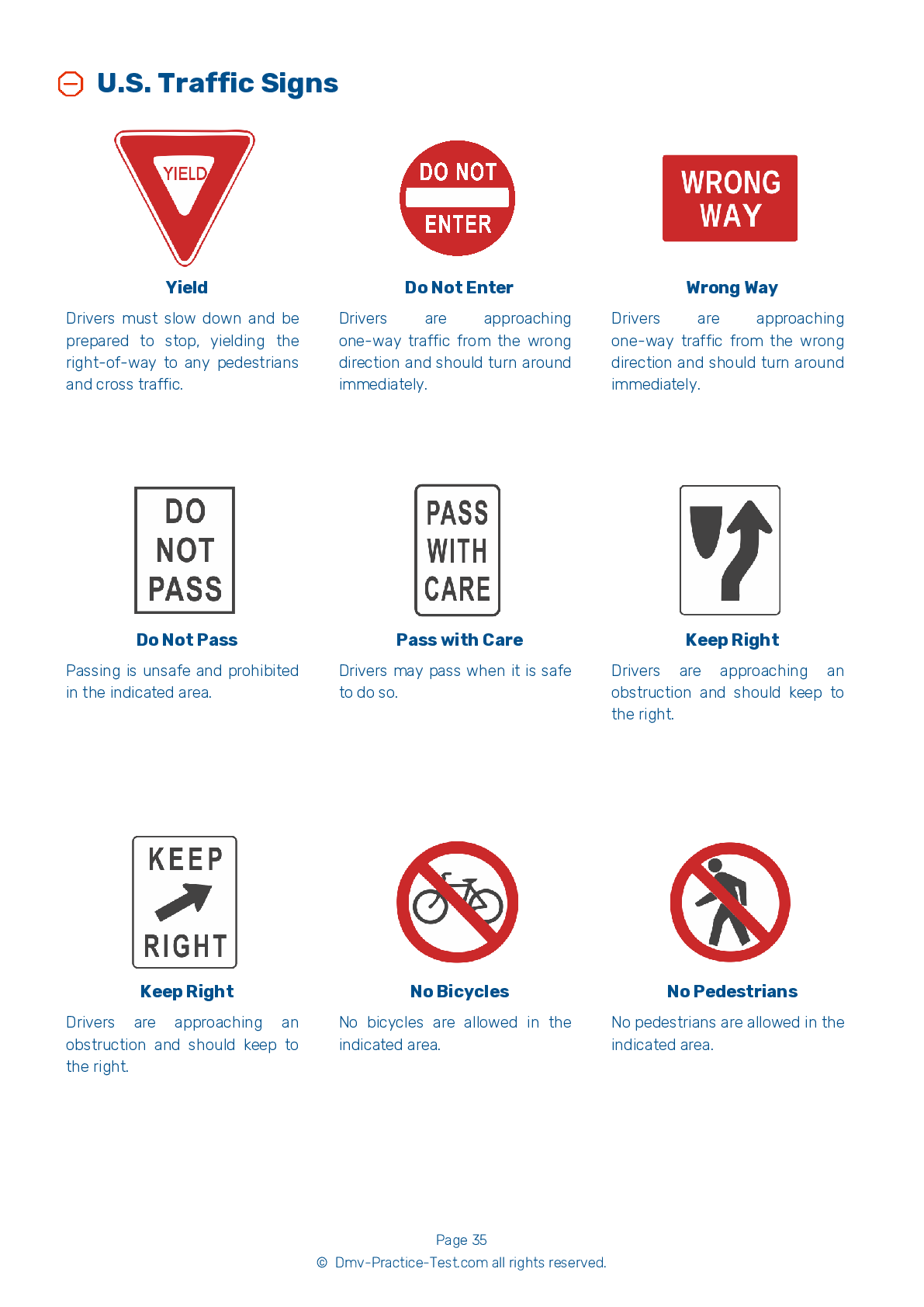Motorcycle Test | License OR 2025 | FREE Online Practice! #15 Page 4 of 4
Take this FREE motorcycle test (license in OR 2025) to check your knowledge of the road rules. To improve your results, download a motorcycle handbook online, study theory, and practice for free on our website. Still worried about how to get a motorcycle license in Oregon in 2025? Check our website for more sample tests, train as much as possible, and boost your grades!
19 . In regards to drinking and riding, many penalties are:
Oregon law applies severe mandatory penalties for drinking and riding. It is both illegal and dangerous to operate a motor vehicle while under the influence of alcohol.
20 . This sign means:
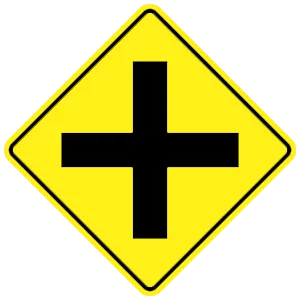
This sign warns of the presence of a crossroad ahead.
21 . Which portion of the lane should be avoided?
There is no lane position that is always best and no lane position that should always be avoided. Select a lane position that is appropriate for riding conditions.
22 . Just like cars, motorcycles have blind spots. When switching lanes, you should:
Blind spots, by definition, are areas that you cannot see by just looking in your mirrors. Turn your head to the side and check over your shoulder for vehicles in your blind spot before you change lanes.
23 . If you are being chased by a dog, you should:
If a dog is chasing your motorcycle, downshift and slowly approach the dog. Once you have gotten close to the animal, accelerate and leave it behind. Do not attempt to kick it.
24 . When does an Anti-Lock Braking System (ABS) begin operating?
Some motorcycles are equipped with an Anti-Lock Braking System (ABS). ABS is designed to prevent skidding and wheel lock-up when motorcyclists are stopping in straight-line, panic situations. ABS operates when maximum pressure is applied to both the front and rear brake controls. If electronic sensors detect the possibility of a wheel lock, brake hydraulic pressure is released then re-applied to maintain maximum braking effectiveness.
25 . When traveling in a work zone, a motorcyclist should be especially aware of:
Work zones present hazards to all operators, but especially to motorcyclists. Motorcyclists riding in work zones should be especially alert to loose gravel and dirt, wet oil and tar, uneven or rippled temporary pavement, scored or grooved pavement, and objects in the road.
See the exact questions that will be on the 2025 Oregon DMV exam.
99.2% of people who use the cheat sheet pass the FIRST TIME
Jeneen was tired of paying $5/gallon. She got herself a scooter that required the motorcycle license. She studyed the motorcycle test cheat sheet and passed her test the next day!
Christopher tells us how he knew nothing prior to obtaining the motorcycle study guide, and he only got one question wrong because he clicked on the wrong answer by mistake.
